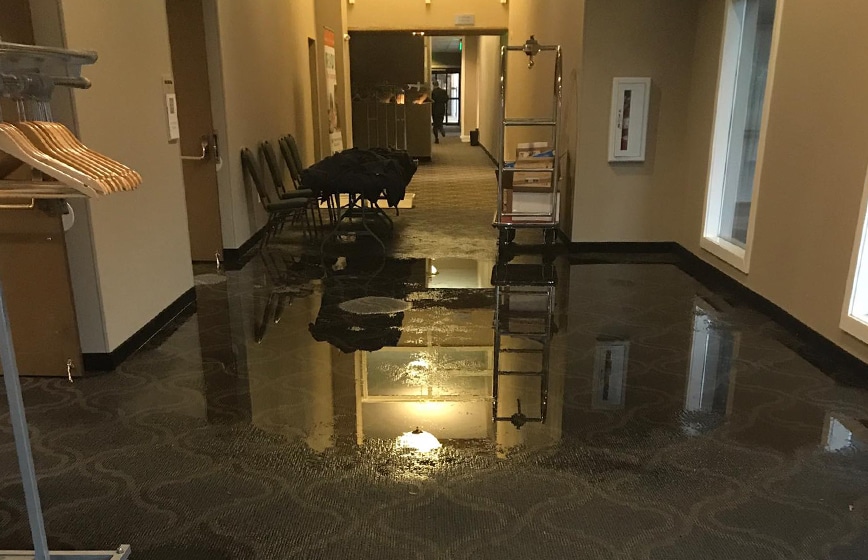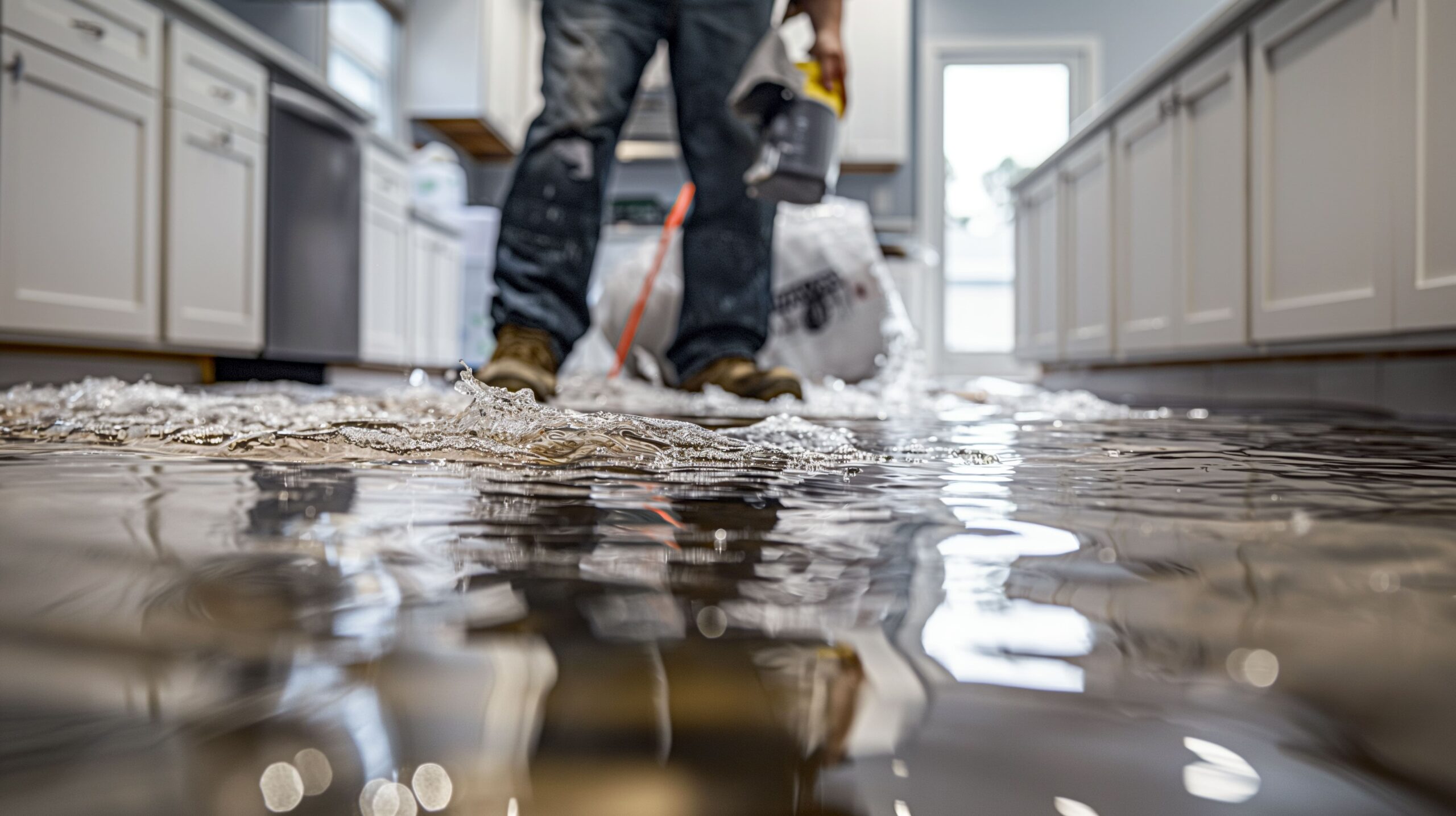Water Damage Restoration 101: Comprehending the Process and Cost
Water damage can strike unexpectedly, leaving home owners in a state of complication. Recognizing the remediation procedure is important for reliable recuperation. From reviewing the damage to choosing the appropriate service supplier, each action impacts the general outcome and cost. Variables such as the type of water damage and seriousness additionally play a substantial function. What are the details techniques utilized in reconstruction, and just how can one plan for prospective expenditures?
Kinds Of Water Damage
First Analysis and Examination

Water Removal Strategies
Following the preliminary assessment, reliable water removal methods are employed to alleviate damage and prevent more issues. These strategies include the usage of specialized devices such as completely submersible pumps and industrial-grade vacuums - Water Damage Restoration. The option of approach depends upon the volume of water existing and the type of products impacted. For standing water, completely submersible pumps are typically utilized for fast removal, while vacuum cleaners are perfect for extracting water from carpetings and upholstery. Additionally, advanced methods like water extraction mats might be utilized for hard-to-reach locations - Water Damage Restoration. The objective is to remove as much water as feasible, minimizing the possibility for mold growth and structural damage. Motivate and efficient water extraction is important in the overall water damage remediation process
Drying and Dehumidification Process
When the water extraction is total, the drying out and dehumidification procedure comes to be vital to recovering the damaged area. This phase normally uses industrial-grade dehumidifiers and air moving companies to successfully lower moisture levels. The dehumidifiers draw in moist air, removing excess humidity, while air moving companies circulate air to accelerate dissipation. Monitoring equipment is commonly used to track moisture and temperature levels, making sure ideal drying out problems. The period of this procedure can vary depending upon the degree of the water damage and ecological aspects. It is essential to completely dry all impacted materials, including wall surfaces, floor covering, and home furnishings, to protect against mold development and structural damage. Appropriate implementation of this action is critical for a successful remediation result.
Cleaning and Disinfecting Affected Locations
Once the drying out process is full, a complete initial analysis and evaluation of impacted areas is crucial to identify contamination degrees. Efficient cleansing techniques and suitable items need to then be employed to get rid of debris and discolorations. Sanitization and disinfection approaches are vital to ensure that damaging microorganisms are removed, bring back the room to a safe condition.
First Evaluation and Examination
Before starting any reconstruction initiatives, a detailed initial assessment and evaluation of the impacted locations are essential for reliable cleaning and disinfecting. This process includes recognizing the extent of water damage, establishing the source of the water breach, and examining the products affected. Examiners generally search for indicators of mold development, architectural honesty issues, and damaged belongings. The evaluation also includes checking moisture levels using specialized equipment to guarantee no covert water pockets remain, as these can result in additional complications. Documenting the findings is essential for intending the following steps in the repair process. A comprehensive first analysis enables restoration experts to create a targeted approach for reliable cleansing and disinfecting, inevitably minimizing damage and health risks.
Cleaning Strategies and Products
Efficient cleaning and disinfecting of water-damaged areas require a selection of methods and products customized to the particular products impacted. For permeable surfaces like drywall and carpets, removal techniques are necessary to remove excess moisture, followed by deep cleansing with specialized cleaning agents. Non-porous materials such as floor tile or metal can be cleaned up making use of commercial-grade cleansers that successfully eliminate contaminants. Vapor cleansing is another reliable strategy, especially for carpets and upholstery, as it utilizes high temperature levels to remove microorganisms and mold and mildew (Water Damage Restoration). Additionally, environment-friendly products are increasingly prominent for their safety and security and efficiency - Water Extraction And Drying. Eventually, choosing the suitable cleansing methods and products not only ensures immediate sanitation however additionally aids in protecting against more damage and carcinogen related to water invasion
Sanitization and Disinfection Techniques
When addressing water damage, proper sanitization and sanitation methods are important to ensure the security and wellness of the damaged environment. After initial cleaning, surfaces have to be treated with proper anti-bacterials to eliminate virus, mold, and germs that grow here in damp problems. Common methods include using EPA-approved chemical disinfectants, which can be applied with splashing or cleaning strategies. In addition, ultraviolet (UV) light systems can effectively sanitize areas by neutralizing microbes without severe chemicals. The option of approach frequently depends upon the sort of products influenced and the degree of contamination. Eventually, comprehensive sanitization not only recovers a secure living space but additionally helps stop future wellness threats connected with lingering moisture and mold and mildew growth.

Fixings and Restoration Options
Evaluating the damage brought on by water direct exposure is essential for identifying the appropriate repairs and remediation choices. Home owners might face various issues, including harmed drywall, deformed floor covering, and endangered structural elements. Depending upon the level of the damage, repairs may include replacing sections of drywall, installing new floor covering, or strengthening structural beams. In instances of serious damage, complete substitute of affected materials may be required. In addition, specialist conservators typically suggest using moisture meters to analyze surprise wetness degrees prior to selecting the most effective strategy. It is important to act without delay to avoid mold and mildew development and additional degeneration. Choosing the ideal options not just restores the residential or commercial property yet likewise guarantees long-lasting safety and capability.
Aspects Influencing Restoration Costs

The extent of water damage directly affects the repair sets you back home owners can anticipate to sustain. Variables such as the resource of the water, the period of direct exposure, and the affected materials considerably affect rates. Clean water damage from a damaged pipeline is normally less costly to restore compared to damage caused by sewer. In addition, the degree of contamination determines the demand for specialized cleansing and disposal services, even more enhancing costs. Geographic location likewise contributes, as local labor prices and accessibility of restoration services can differ. Finally, the urgency of the reaction affects costs; quicker treatments usually cause decrease overall expenses by preventing further damage. Understanding these variables is crucial for property owners when estimating reconstruction prices.
The three primary types of water damage are classified based on contamination levels: clean water, grey water, and black water. A detailed initial assessment and inspection are crucial steps in the water damage reconstruction process. For standing water, completely submersible pumps are usually utilized for fast elimination, while vacuums are excellent for drawing out water from carpets and furniture. The extent of water damage straight affects the reconstruction sets you back property owners can anticipate to incur. Clean water damage from a busted pipe is usually much less costly to recover compared to damage created by sewage.